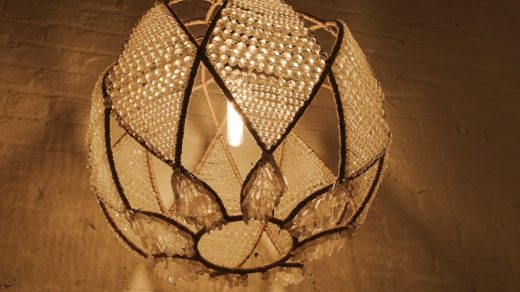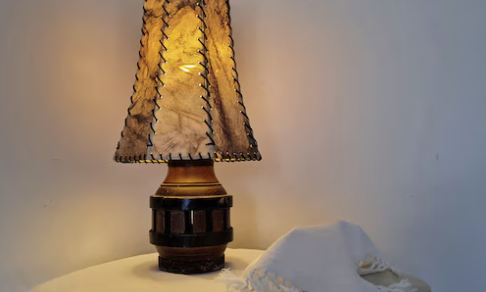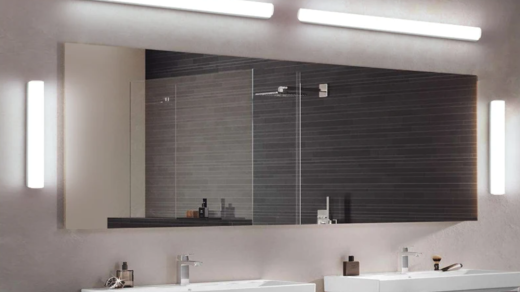Shine a Light on Your Culinary Creations: Upgrading Your Kitchen Ceiling Light
The kitchen is often considered the heart of the home, and as such, it is important to create a space that is not only functional but also aesthetically pleasing. One key element that can greatly impact the overall look and feel of a kitchen is lighting. Proper kitchen lighting can enhance the ambiance, improve safety, and make tasks easier to perform. In this article, we will explore the importance of kitchen lighting and discuss different types of ceiling lights, how to choose the right one for your space, and provide tips on installation and maintenance.
The Importance of Kitchen Lighting
Kitchen lighting serves multiple functions in a space where various activities take place. Task lighting is essential for performing specific tasks such as chopping vegetables or reading recipes. Ambient lighting provides overall illumination and sets the mood in the kitchen. Accent lighting is used to highlight specific areas or objects, such as artwork or architectural features. By incorporating these different types of lighting, you can create a well-balanced and functional kitchen.
Proper kitchen lighting also improves safety in the space. Adequate task lighting ensures that you can see what you are doing while preparing food, reducing the risk of accidents. Additionally, good lighting can help prevent eye strain and fatigue, making it easier to work in the kitchen for extended periods of time.
In terms of aesthetics, well-designed kitchen lighting can greatly enhance the overall look and feel of the space. It can highlight architectural features, create focal points, and add depth and dimension to the room. By choosing the right fixtures and bulbs, you can create a warm and inviting atmosphere that complements your personal style.
Types of Kitchen Ceiling Lights
There are several types of ceiling lights kronolighting that are commonly used in kitchens. Recessed lights are a popular choice as they provide a clean and modern look. They are installed flush with the ceiling and provide even illumination throughout the space. Pendant lights are another common option and are often used to provide task lighting over kitchen islands or dining areas. They come in a variety of styles and can add a decorative element to the space. Chandeliers are a more traditional choice and can add elegance and sophistication to a kitchen. They are often used in larger kitchens with high ceilings. Track lighting is a versatile option that allows you to direct light where it is needed. It is often used to highlight specific areas or objects in the kitchen.
Each type of kitchen ceiling light has its pros and cons. Recessed lights are sleek and unobtrusive, but they may not provide enough focused light for certain tasks. Pendant lights can add visual interest and create a focal point, but they may not provide enough overall illumination. Chandeliers can add a touch of elegance, but they may not be suitable for smaller kitchens or spaces with low ceilings. Track lighting is flexible and can be adjusted to suit your needs, but it may not provide as much focused light as other options.
Choosing the Right Kitchen Ceiling Light for Your Space
When choosing a kitchen ceiling light, there are several factors to consider. First, you need to determine the size of the fixture that will work best in your space. Consider the size of your kitchen and the height of your ceiling when making this decision. A fixture that is too small may not provide enough light, while one that is too large may overwhelm the space.
Brightness is another important factor to consider. Different fixtures have different lumen outputs, so be sure to choose one that provides enough light for your needs. Additionally, consider the color temperature of the bulbs you choose. Warm white (2700-3000K) creates a cozy and inviting atmosphere, while cool white (4000-5000K) provides a brighter and more energizing light.
Style is also an important consideration when choosing a kitchen ceiling light. Consider the overall design of your kitchen and choose a fixture that complements your style. Whether you prefer a modern, traditional, or eclectic look, there are plenty of options available to suit your taste.
Factors to Consider When Upgrading Your Kitchen Ceiling Light
Upgrading your kitchen ceiling light can have several benefits. First and foremost, it can improve the overall look and feel of your kitchen. By choosing a fixture that complements your style and enhances the space, you can create a more inviting and enjoyable environment.
Energy efficiency is another important factor to consider when upgrading your kitchen ceiling light. LED lights are a popular choice as they are more energy-efficient than traditional incandescent bulbs. They use less electricity and last longer, saving you money on your energy bills and reducing your carbon footprint.
Budget is also an important consideration when upgrading your kitchen ceiling light. Determine how much you are willing to spend and choose a fixture that fits within your budget. Keep in mind that while LED lights may have a higher upfront cost, they will save you money in the long run due to their energy efficiency and longer lifespan.
Compatibility with existing wiring is another factor to consider when upgrading your kitchen ceiling light. If you are replacing an existing fixture, make sure the new one is compatible with the wiring in your kitchen. If you are unsure, it is best to consult a professional electrician to ensure a safe and proper installation.
LED vs. Incandescent Kitchen Ceiling Lights

LED lights and incandescent lights are two common options for kitchen ceiling lights. LED lights are more energy-efficient, using up to 80% less energy than incandescent bulbs. They also have a longer lifespan, typically lasting up to 25 times longer than incandescent bulbs. LED lights produce less heat, making them safer to use in the kitchen. They are also available in a wide range of colors and can be dimmed to create different moods and atmospheres.
On the other hand, incandescent bulbs are less expensive upfront and provide a warm and cozy light. They are also compatible with most dimmer switches, allowing you to adjust the brightness to suit your needs. However, they have a shorter lifespan and use more energy, resulting in higher energy bills.
When choosing between LED and incandescent kitchen ceiling lights, consider your energy efficiency goals, budget, and desired lighting effects. LED lights are a more sustainable and cost-effective option in the long run, while incandescent bulbs may be more suitable if you prefer a warm and traditional look.
How to Install a New Kitchen Ceiling Light
Installing a new kitchen ceiling light can be a relatively simple process if you have some basic electrical knowledge. However, if you are unsure or uncomfortable working with electricity, it is best to hire a professional electrician to ensure a safe and proper installation. If you decide to proceed with the installation yourself, here is a step-by-step guide:
1. Turn off the power: Before starting any electrical work, turn off the power to the circuit at the main electrical panel.
2. Remove the old fixture: Remove the screws or nuts holding the old fixture in place and carefully disconnect the wires.
3. Install the new fixture: Connect the wires from the new fixture to the corresponding wires in the ceiling using wire nuts. Secure the fixture to the ceiling using screws or nuts.
4. Test the light: Turn on the power at the main electrical panel and test the light to ensure it is working properly.
It is important to follow all safety precautions when installing a new kitchen ceiling light. Always turn off the power before working with electrical wiring and use caution when handling live wires.
Creative Kitchen Ceiling Light Ideas
If you are looking for creative and unique ideas for your kitchen ceiling lights, there are plenty of options to choose from. One idea is to use vintage fixtures to add a touch of nostalgia and character to your space. Vintage pendant lights or chandeliers can create a charming and eclectic look in your kitchen.
Another idea is to incorporate color-changing LED lights into your kitchen ceiling. These lights can be controlled with a remote or smartphone app, allowing you to change the color and brightness to suit your mood or the occasion. This can add a fun and dynamic element to your kitchen.
You can also get creative with the placement of your kitchen ceiling lights. Instead of installing them in a straight line, consider arranging them in a cluster or in a unique pattern. This can create visual interest and make a statement in your kitchen.
The Benefits of a Well-Lit Kitchen
Having a well-lit kitchen has several benefits. First and foremost, it improves the overall mood and atmosphere in the space. A well-lit kitchen feels warm and inviting, making it a more enjoyable place to spend time.
Good lighting also improves productivity in the kitchen. Adequate task lighting ensures that you can see what you are doing while preparing food, reducing the risk of accidents and making tasks easier to perform. Additionally, good lighting can help prevent eye strain and fatigue, allowing you to work in the kitchen for longer periods of time.
Energy efficiency is another benefit of having a well-lit kitchen. By choosing energy-efficient bulbs and fixtures, you can reduce your energy consumption and lower your energy bills. LED lights are a great option as they use less electricity and last longer than traditional incandescent bulbs.
Maintaining Your Kitchen Ceiling Light
To ensure that your kitchen ceiling light continues to function properly and look its best, regular maintenance is necessary. Here are some tips on how to maintain your kitchen ceiling light:
1. Clean regularly: Dust and dirt can accumulate on the surface of your light fixtures, reducing their brightness and overall appearance. Clean them regularly using a soft cloth or duster.
2. Replace bulbs as needed: If a bulb burns out, replace it promptly to ensure that your kitchen remains well-lit. Be sure to use the correct type and wattage of bulb for your fixture.
3. Check for loose connections: Over time, the connections between the wires and the fixture can become loose. Periodically check for any loose connections and tighten them if necessary.
4. Inspect for damage: Regularly inspect your kitchen ceiling light for any signs of damage, such as cracks or frayed wires. If you notice any damage, it is best to replace the fixture to ensure safety.
By following these maintenance tips, you can prolong the lifespan of your kitchen ceiling light and keep it looking its best.
Maximizing Your Kitchen’s Lighting Potential
In addition to your kitchen ceiling light, there are several other ways to maximize your kitchen’s lighting potential. One option is to install under-cabinet lighting. This provides additional task lighting and can make it easier to see while working on countertops or cutting boards. Under-cabinet lighting also adds a subtle glow to the space and can create a warm and inviting atmosphere.
Another option is to install dimmer switches. Dimmers allow you to adjust the brightness of your kitchen ceiling light, allowing you to create different moods and atmospheres in the space. They are especially useful in open-concept kitchens where the lighting needs may vary throughout the day.
Natural light is another important element to consider when maximizing your kitchen’s lighting potential. If possible, incorporate windows or skylights into your kitchen design to allow natural light to flood the space. Natural light not only provides additional illumination but also creates a sense of openness and connection with the outdoors.
In conclusion, kitchen lighting plays a crucial role in creating a functional and aesthetically pleasing space. By incorporating different types of lighting, such as task lighting, ambient lighting, and accent lighting, you can enhance the overall look and feel of your kitchen. When choosing a kitchen ceiling light, consider factors such as size, brightness, color temperature, and style. Upgrading your kitchen ceiling light can have several benefits, including improved aesthetics, energy efficiency, and compatibility with existing wiring. LED lights are a popular choice due to their energy efficiency and longer lifespan. When installing a new kitchen ceiling light, follow safety precautions and consider hiring a professional electrician if you are unsure. By maintaining your kitchen ceiling light and maximizing your kitchen’s lighting potential, you can create a well-lit and enjoyable space for cooking and entertaining.




